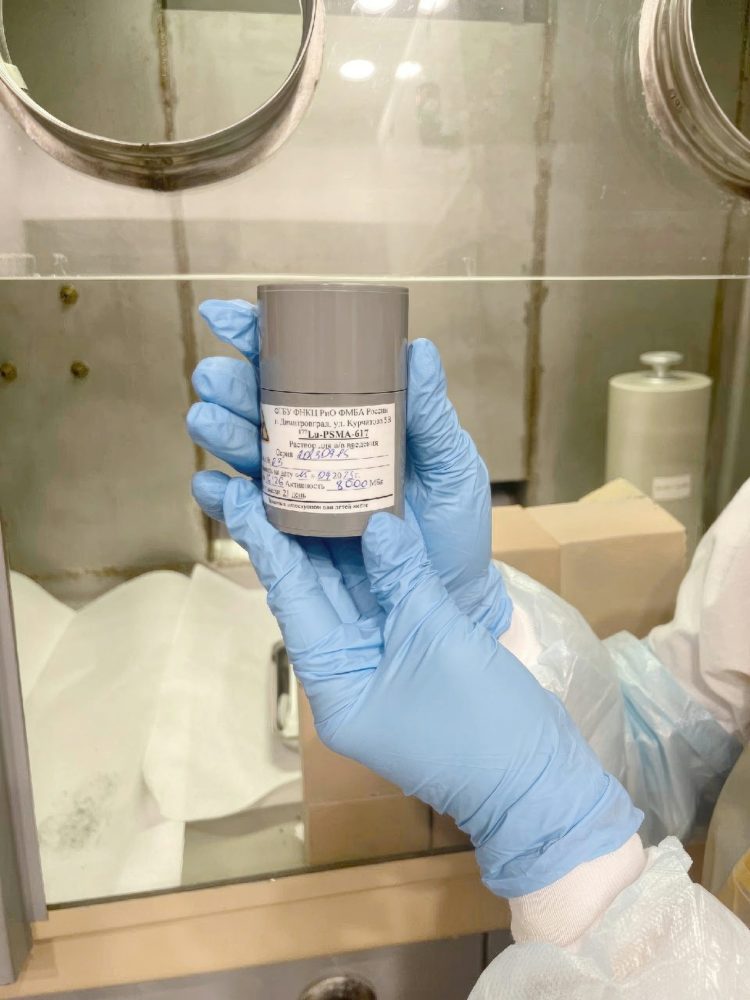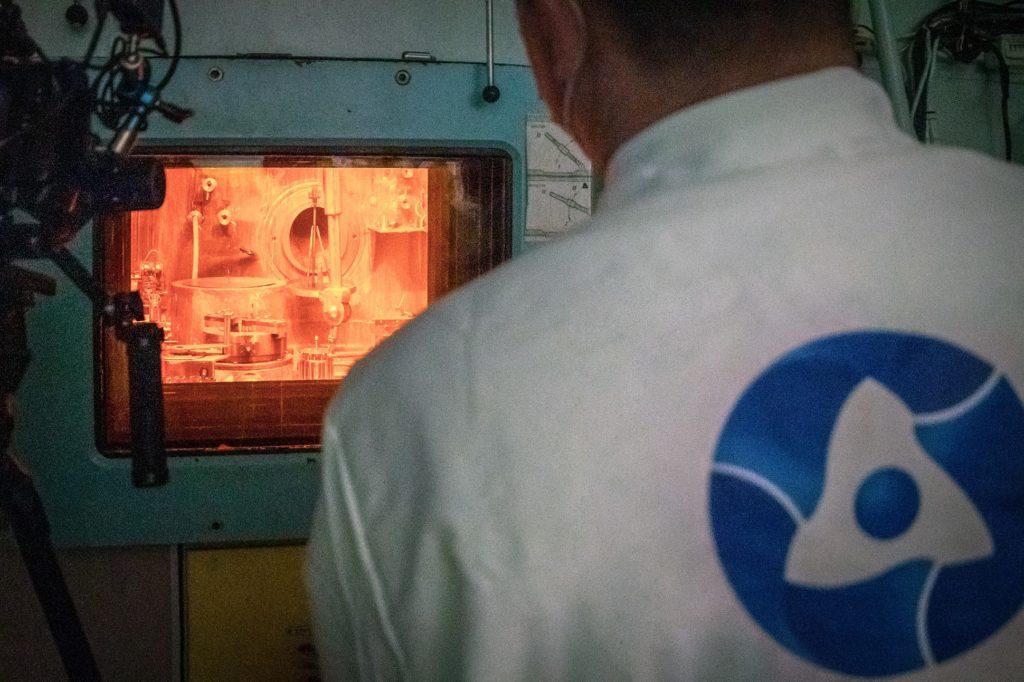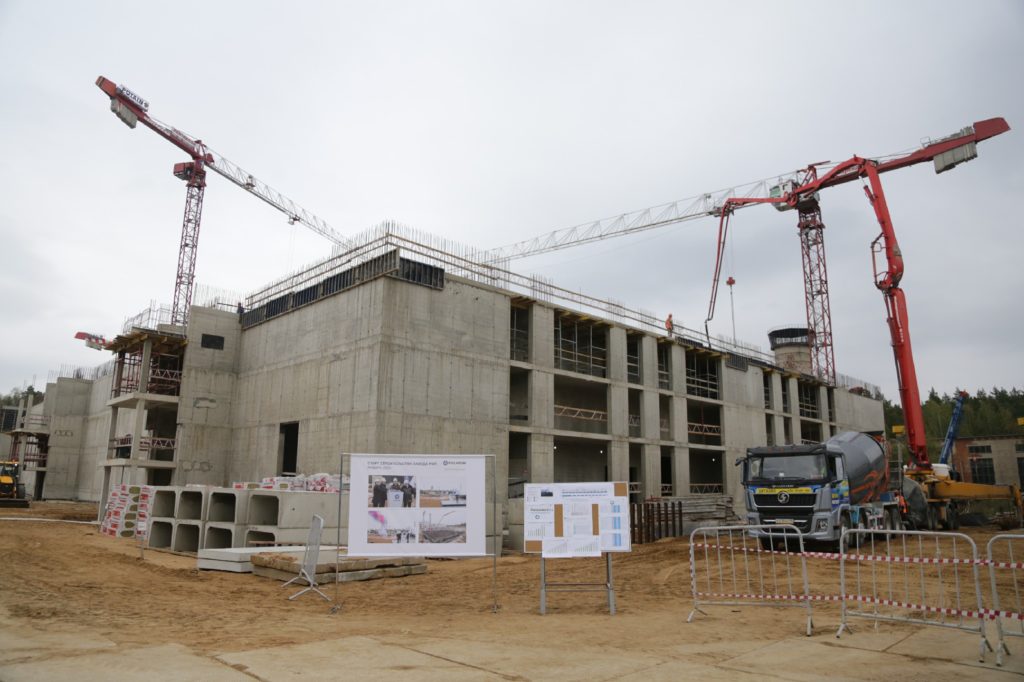
Lutetium 177 Cures
back to contentsImportant news is coming from the world of nuclear medicine: the first patients with prostate cancer have undergone radionuclide therapy with lutetium‑177, and all of them have shown positive changes. Read more about this and other news on Rosatom’s isotope business in our article.
Lutetium
The therapy was administered at the Federal Research and Clinical Center of Radiology and Oncology (FRCCRO) of the Russian Federal Medical and Biological Agency. A substance containing lutetium‑177 for the treatment of neuroendocrine tumors and prostate cancer was developed using technology from the Research Institute of Atomic Reactors (RIAR, part of Rosatom’s research division). The radiopharmaceutical passed all the stages of quality control.
“As a manufacturer of the original substance, we are able to meet all the needs of Russian medical institutions and timely fulfill all the orders we might receive,” says Oleg Andreev, one of the drug developers and Head of Radionuclide Sources and Substances at RIAR. In Russia, the radiopharmaceutical is supplied to four medical centers.
According to Pyotr Sychev, Head of the Nuclear Medicine Center and a radiologist at FRCCRO, the treatment was effective and none of the patients had adverse reactions.
The treatment procedure is as follows: doctors first make sure that the patient experiences no side effects and then inject the drug intravenously. The drug is administered once every two months. “Our patients have completed the first course of treatment, and all of them showed a decrease in the blood level of prostate specific antigen protein. They feel well,” Peter Sychev said.
As noted by Maxim Kushnarev, CEO of V/O Izotop (Rosatom’s subsidiary supplying isotope products), in an interview with Vestnik Atomproma magazine, lutetium‑177 medical isotope has been supplied to Brazil since 2021.
This September, the Leningrad Nuclear Power Plant obtained a license to produce lutetium‑177, having added a new isotope to its product range consisting of iodine‑131, molybdenum‑99 and cobalt‑60.
Cobalt
In mid-November, the Leningrad NPP met its annual target for the production of cobalt‑60, which is used in gamma radiation sources for commercial irradiation plants. The target was reached faster than planned thanks to the cooperation with Smolensk and Kursk nuclear power plants. “We have no less ambitious cobalt‑60 production plans for the next year,” says Leningrad NPP Director Vladimir Pereguda. “The share of sterilization cobalt produced in power reactors of the Russian nuclear plants will account for about 30 % of the global cobalt‑60 market this year,” says Nikita Konstantinov, Deputy CEO for Business Development at RosEnergoAtom.
Cobalt‑60 is obtained by placing cobalt absorbers into the reactor and irradiating them for 5 years.

International cooperation
This year, V/O Izotop has won a contract to supply the full needs of Belarusian clinics for technetium generators, increased supplies to Armenia and Kazakhstan, and is working to begin deliveries to Kyrgyzstan and Azerbaijan.
Rosatom is also expanding its footprint in non-CIS countries. In July, Moscow hosted a BRICS expert forum with offline and online attendance. Then, at another forum held in August in South Africa, a decision was made to create a BRICS working group on nuclear medicine. “We expect Russia, and Rosatom in particular, to play a leading role in this working group. This is not only our assessment — we were very much pleased to hear from a South African representative that it is only Rosatom that possesses the end-to-end production technology, from source isotopes to radiopharmaceuticals, among the BRICS companies. And we are one of the few companies worldwide that has competencies in each production stage,” Maxim Kushnarev commented.
Russian germanium‑68/gallium‑68 generators are now supplied to India and Kazakhstan. Besides, molybdenum supplies to India, which were interrupted for two years due to logistical issues, have resumed. Supplies of both medical and commercial isotopes to China are also growing. Among them is the helium‑3 isotope used in airports. Isotope sales to China are expected to grow one and a half to two times for the current year.
As Maxim Kushnarev noted, European companies did not refuse to purchase Russian isotopes, and all the difficulties that had arisen were gradually overcome. Discussions are underway to provide contract manufacturing services. Deliveries to North America are also continuing.

Rosatom’s isotope business development plans provide for the construction of a GMP factory in Obninsk. It will manufacture a wide range of radiopharmaceuticals and active substances, including both the most sought-after radiopharmaceuticals based on iodine‑131, samarium‑153 and molybdenum‑99, and future-proven drugs containing lutetium‑177, actinium‑225, radium‑223 and other isotopes.




